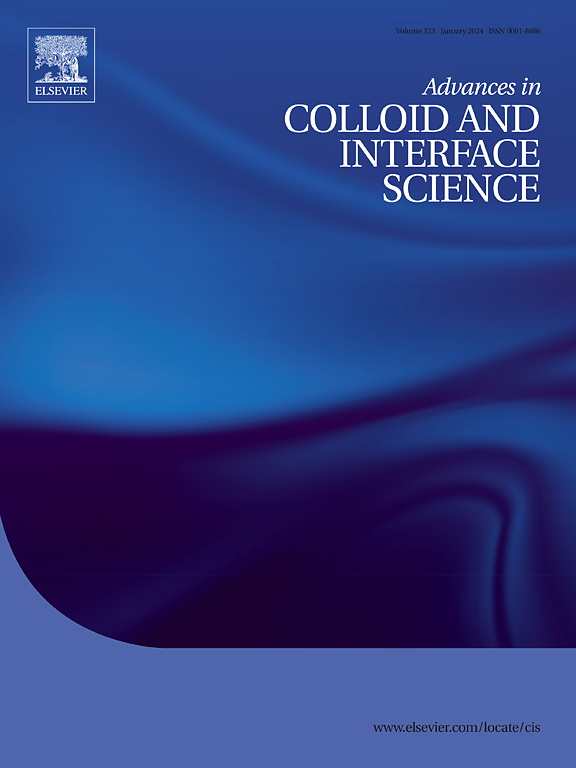伤口护理管理生物材料的进展:来自最近发展的见解
IF 19.3
1区 化学
Q1 CHEMISTRY, PHYSICAL
引用次数: 0
摘要
伤口愈合不再是一个被动的过程,而是先进材料、治疗剂和创新技术之间动态相互作用的过程。慢性伤口因糖尿病、衰老和耐多药感染等因素而恶化,需要传统敷料以外的解决方案。先进的伤口护理已经发展成为一种积极的治疗策略,利用模拟细胞外基质的生物材料,促进组织再生和对抗感染。制造技术的最新进展,如三维生物打印、静电纺丝和微流控模板,已经能够精确定制伤口敷料,以应对复杂的临床挑战。生物活性分子和生长因子的结合,进一步提高了这些敷料的功效。生物工程水凝胶和实时监测系统等新兴趋势有可能将伤口护理转变为一个智能的、自适应的过程,以响应患者的特定需求。通过解决当前的挑战和探索新兴的生物材料,未来可能会实现个性化无疤痕伤口愈合技术。本文首先概述皮肤、伤口和延迟伤口愈合的因素。在此背景下,传统的和先进的基于生物材料的伤口护理策略得到了广泛的讨论。主要重点是全面介绍先进伤口护理管理的综合方法,结合材料科学,生物技术和临床创新的突破,彻底改变伤口愈合领域。本综述承诺提供一站式详尽的报告,将成为未来伤口护理和管理领域研究工作的火炬手。本文章由计算机程序翻译,如有差异,请以英文原文为准。

Advances in biomaterials for wound care management: Insights from recent developments
Healing wounds is no longer a passive process but a dynamic interplay between advanced materials, therapeutic agents and innovative technologies. Chronic wounds, aggravated by factors like diabetes, aging and multidrug-resistant infections, demand solutions beyond traditional dressings. Advanced wound care has evolved into an active therapeutic strategy, leveraging biomaterials that mimic the extracellular matrix, foster tissue regeneration and combat infections. Recent advances in fabrication techniques, such as three-dimensional bioprinting, electrospinning and microfluidic templating, have enabled precise customization of wound dressings tailored to complex clinical challenges. The integration of bioactive molecules and growth factors, further enhances the efficacy of these dressings. Emerging trends like bioengineered hydrogels and real-time monitoring systems have the potential to transform wound care into an intelligent, adaptive process that responds to patient-specific needs. By addressing the current challenges and exploring emerging biomaterials, a future with personalized scar-free wound healing technologies may be achieved in the future. The current article begins by providing an overview of skin, wounds and the factors responsible for delaying wound healing. With this background, the traditional and advanced biomaterial based wound care strategies have been discussed extensively. The main focus is to present a comprehensive account on the integrated approaches in advance wound care management, combining breakthroughs in material science, biotechnology and clinical innovations to revolutionize the field of wound healing. This review promises a one-stop exhaustive report that shall be the torchbearer for future research endeavours in the field of wound care and management.
求助全文
通过发布文献求助,成功后即可免费获取论文全文。
去求助
来源期刊
CiteScore
28.50
自引率
2.60%
发文量
175
审稿时长
31 days
期刊介绍:
"Advances in Colloid and Interface Science" is an international journal that focuses on experimental and theoretical developments in interfacial and colloidal phenomena. The journal covers a wide range of disciplines including biology, chemistry, physics, and technology.
The journal accepts review articles on any topic within the scope of colloid and interface science. These articles should provide an in-depth analysis of the subject matter, offering a critical review of the current state of the field. The author's informed opinion on the topic should also be included. The manuscript should compare and contrast ideas found in the reviewed literature and address the limitations of these ideas.
Typically, the articles published in this journal are written by recognized experts in the field.

 求助内容:
求助内容: 应助结果提醒方式:
应助结果提醒方式:


